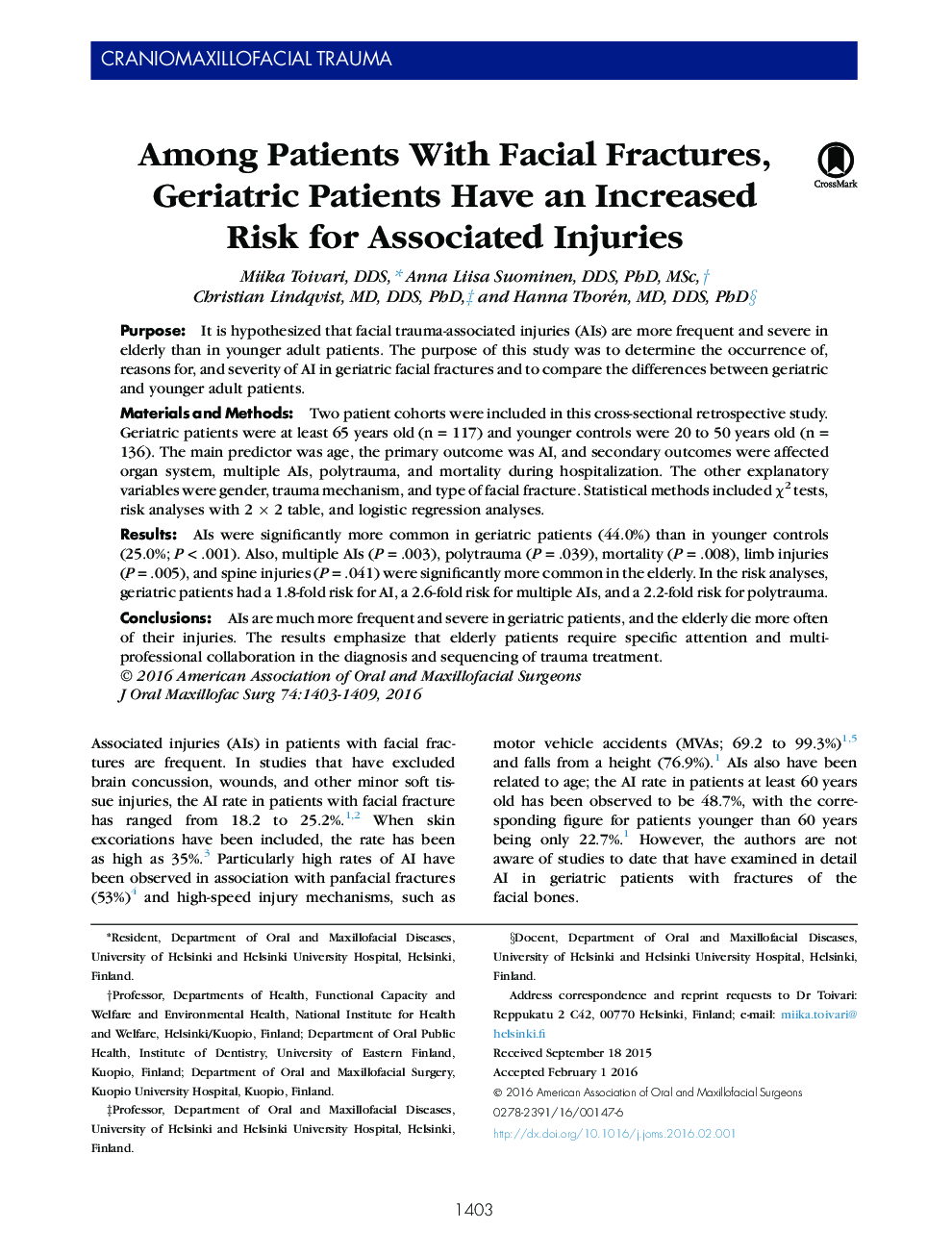| Article ID | Journal | Published Year | Pages | File Type |
|---|---|---|---|---|
| 3152082 | Journal of Oral and Maxillofacial Surgery | 2016 | 7 Pages |
PurposeIt is hypothesized that facial trauma-associated injuries (AIs) are more frequent and severe in elderly than in younger adult patients. The purpose of this study was to determine the occurrence of, reasons for, and severity of AI in geriatric facial fractures and to compare the differences between geriatric and younger adult patients.Materials and MethodsTwo patient cohorts were included in this cross-sectional retrospective study. Geriatric patients were at least 65 years old (n = 117) and younger controls were 20 to 50 years old (n = 136). The main predictor was age, the primary outcome was AI, and secondary outcomes were affected organ system, multiple AIs, polytrauma, and mortality during hospitalization. The other explanatory variables were gender, trauma mechanism, and type of facial fracture. Statistical methods included χ2 tests, risk analyses with 2 × 2 table, and logistic regression analyses.ResultsAIs were significantly more common in geriatric patients (44.0%) than in younger controls (25.0%; P < .001). Also, multiple AIs (P = .003), polytrauma (P = .039), mortality (P = .008), limb injuries (P = .005), and spine injuries (P = .041) were significantly more common in the elderly. In the risk analyses, geriatric patients had a 1.8-fold risk for AI, a 2.6-fold risk for multiple AIs, and a 2.2-fold risk for polytrauma.ConclusionsAIs are much more frequent and severe in geriatric patients, and the elderly die more often of their injuries. The results emphasize that elderly patients require specific attention and multi-professional collaboration in the diagnosis and sequencing of trauma treatment.
Graphical AbstractFigure optionsDownload full-size imageDownload high-quality image (163 K)Download as PowerPoint slide
